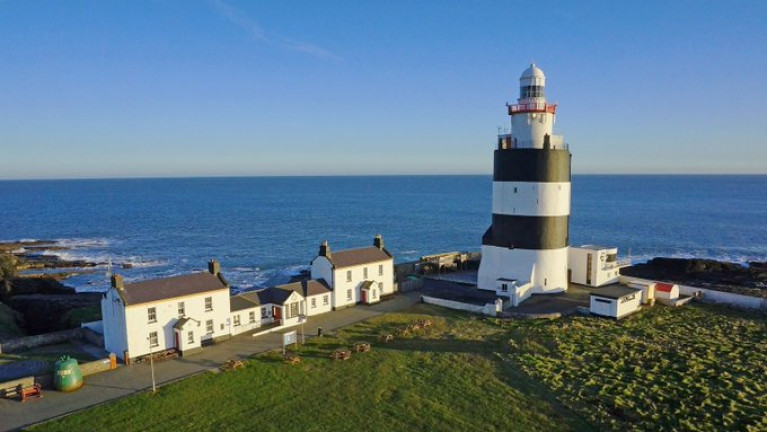Displaying items by tag: St Bridget
St. Bridget Another Former Aran Islands Ferry Departs Dublin's Grand Canal Dock In Preparation for Seasonal Bay Cruises
Dublin Bay Cruises St. Bridget which departed the capital and headed across the scenic bay to neighbouring Dun Laoghaire Harbour from where it is based, is preparing for another busy season, writes Jehan Ashmore.
The 96 passenger vessel (spelt St. Bridget) had routinely been docked in the Grand Canal Dock Basin during the winter will however see cruises resume in March, running out of Dublin, Howth and Dun Laoghaire. In addition from this harbour, evening excursions encircling Dalkey Island is another option.
During St. Bridget's departure last weekend, the vessel passed the fornlorn Naomh Éanna which in January as Afloat reported, had keeled over heavily to port while in a Georgian era graving dry dock. This one of three dry docks (the largest infilled) adjoin the basin and is where ship repair and building took place.
The former unique CIE operated passenger /freight ferry on the Galway-Aran Islands route, has languished in the capital since withdrawn from service in 1988.
In recent years there were plans to restore the veteran vessel which awaits a more uncertain future given water damage incurred of the Liffey Dockyard 1958 built ship's rivetted hull.
As for the St. Bridget, the vessel is operated by the Garrihy family in which they used previously on Aran Islands service under the name of Galway Bay. Last year, however they sold their west of Ireland sister operation, Doolin2Aran Ferries to rivals The Doolin Ferry Co.
This operator is owned by the O’Brien family, which had the 1992 purpose built passenger/cargoship Oileáin Árann (successor of Naomh Éanna) running Galway-Aran Islands. The ferry was sold to container shipping operator Samskip and renamed the Sæfari which remains operating in Iceland.
As for Ireland's largest islands operator, Aran Island Ferries’ passenger only Saoirse na Farraige, custom built for the longest domestic ferry route entered service from Galway in 2021. Up to then, there was a 33 year absence of service following the end of Naomh Éanna's career, though there has been and continues to be a 'freight' only service run by Lasta Mara Teoranta.
St. Bridget's recent exit of the Grand Canal Basin dock involved use of Buckingham Lock, which is the only functioning lock of three. The others locks, named Camden and Westmoreland where also opened in 1796 as part of the dock basin linking Dublin with the river Shannon.
When the locks were in construction and then known as the Ringsend Docks, they were the largest in the world. The development led to surrounding warehouses, factories, milling operations and gasworks lining the dock quays.
By the 1960's the use of cargoships and coasters declined from docking including use of the inner basin. This is now where Waterways Ireland Visitor Centre is sited and among the high rise buildings is Google's Dublin (EU HQ) and CIE's Grand Canal Dock (Barrow St) DART station.
With St. Bridget's recent albeit brief return to the Liffey, the 1977 built vessel formerly based in France, made a transit through the nearby raised Thomas Clarke (East-link) toll-bridge.
Once through the bridge, St. Bridget motored along the fairway channel from where notable landmarks of the port among them the container cranes, the Poolbeg chimneys, the North Bull and North Bank Lighthouses formed a mix of maritime and industrial landscapes.
This before entering the wonderful expanse of Dublin Bay, with its splendid panorama reaching far along the horizon along with the natural world of marine wildlife.
Add to all this the backdrop of the capital with its mountains and of those in Co. Wicklow.
Co. Wexford's world-famous Hook Lighthouse will celebrate St. Bridget next weekend with an "Imbolc" traditional festival marking the beginning of spring.
Imbolc marks the feast of St Bridget - known as the fire goddess as well as being the patron saint of boatmen, sailors and mariners - and was also one of four important festivals in the Celtic calendar.
During the festival weekend next Saturday and Sunday, visitors to the Co Wexford lighthouse will be able to partake of art workshops and St Bridget's Cross-making with the Hook resident artist Rose.
RTE News has more on this story.





























































